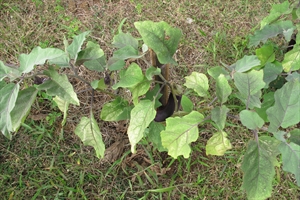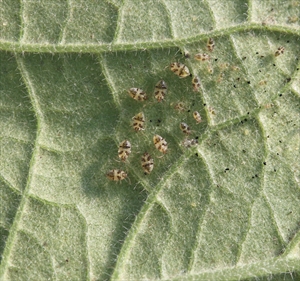- Widespread distribution (but not Africa). On beans, bele, breadfruit, eggplant, Hibiscus, and many other hosts. CABI lists soursop and sweetpotato.
- Nymphs and adults use piercing mouthparts to feed on leaves causing large brown patches on beans, and white spots and whitish-yellow patches on eggplant. Brown faecal spots are present on the underside of leaves.
- Probably not of economic importance, except in dry weather, when natural enemies low.
- Natural enemies: parasitoid wasps, assassin bugs, lacewing larvae, ladybird beetles, pirate bugs, and more.
- Cultural control: create conditions for healthy growth - ensure adequate manures or fertilizer, and water.
- Chemical control: use soap, white or horticultural oils, or PDPs: neem, derris, chilli or pyrethrum. Alternatively, use synthetic pyrethroids, although they are likely to kill natural enemies.










